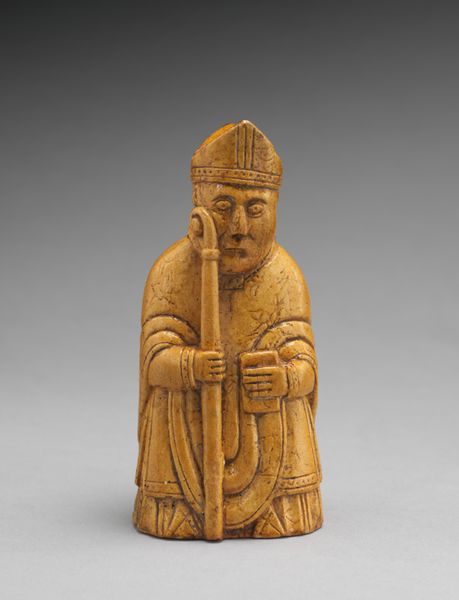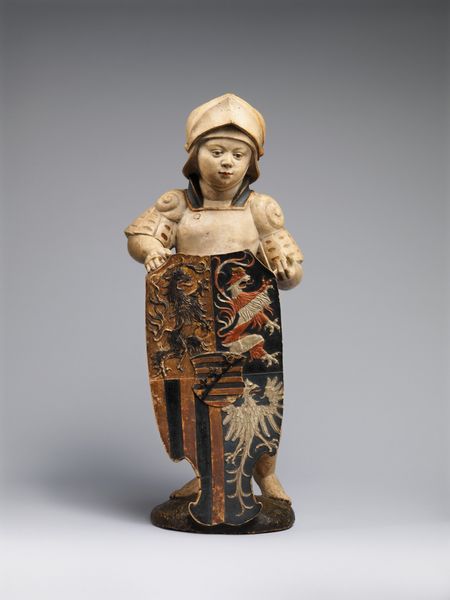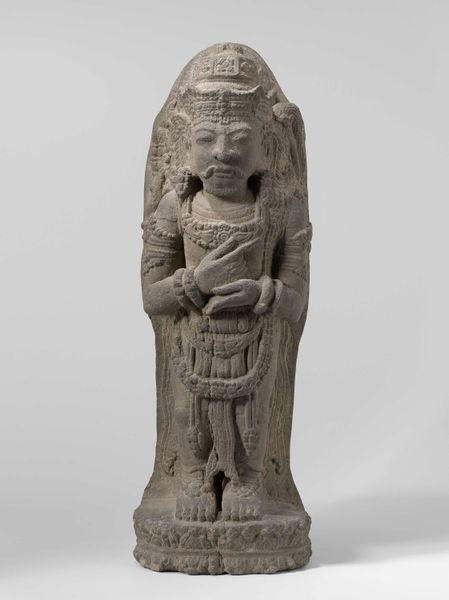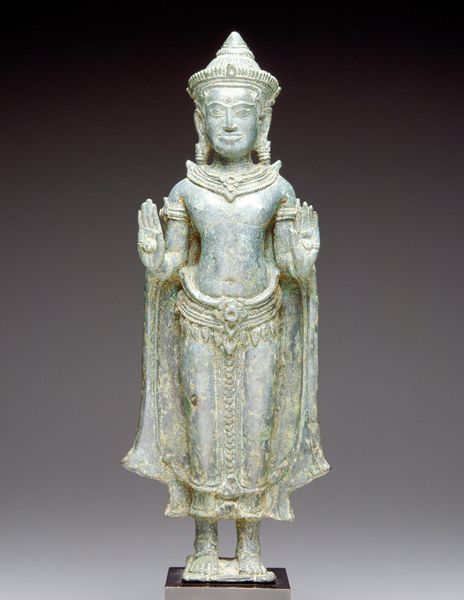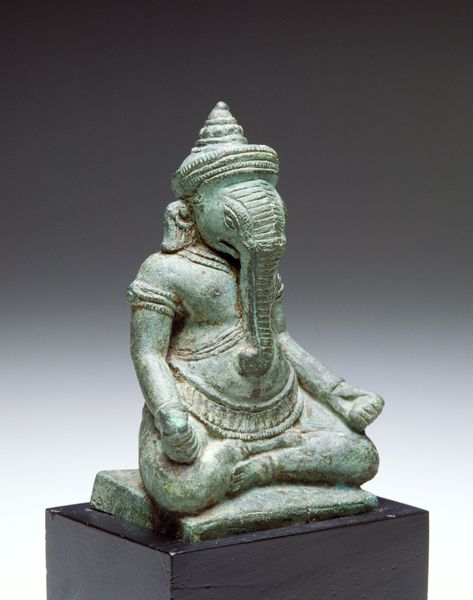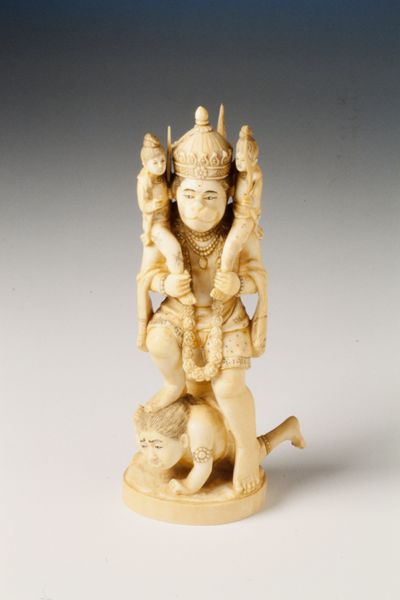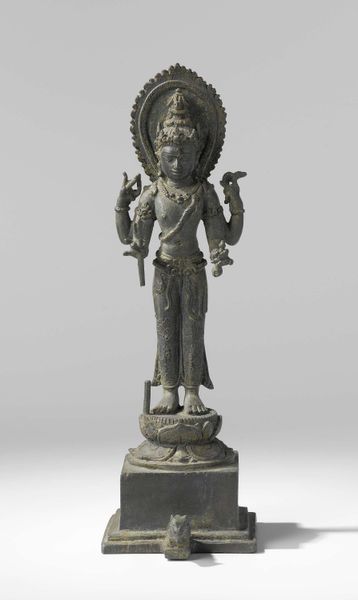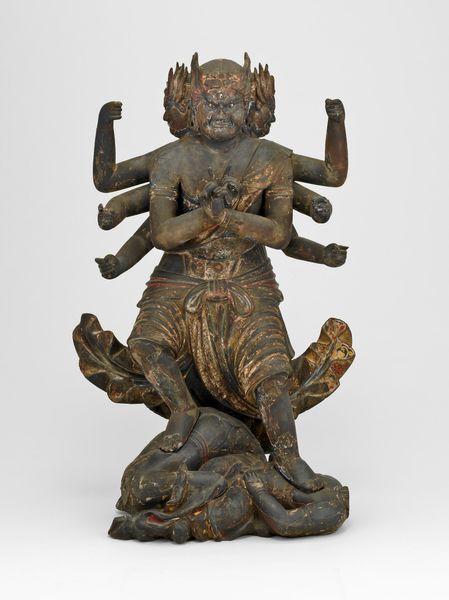
Avalokiteshvara, the Bodhisattva of Infinite Compassion 17th century
0:00
0:00
carving, sculpture, wood
#
carving
#
sculpture
#
asian-art
#
sculptural image
#
figuration
#
sculpture
#
wood
Dimensions: H. 6 3/4 in. (17.1 cm); W. 3 3/8 in. (8.6 cm); D. 3 1/2 in. (8.9 cm); Wt. 1 lb (.5 kg)
Copyright: Public Domain
Curator: Let's turn our attention to this carving of Avalokiteshvara, the Bodhisattva of Infinite Compassion, made in the 17th century. Editor: My initial reaction is that there's a beautiful sense of stillness about it. The color of the wood also adds warmth to the figure. Curator: Yes, the use of wood as the primary material is significant. Considering the carving techniques available at the time, it suggests the important status attributed to Avalokiteshvara that this artisan was called to dedicate the labour to it. There is evidence of consumption and trade with what they may have exchanged the wood for too. Editor: Precisely. Examining the carving, and Avalokiteshvara, allows for discussion on the dissemination of religious imagery and how that influenced socio-political views in that region. It’s a fascinating example of how Buddhism intersected with popular culture. Curator: Absolutely, the formal choices in this sculptural image point us directly toward specific workshop traditions, indicating possible artistic lineages and schools of patronage. Editor: How interesting. The image also prompts reflections on the museum as an institution. I wonder, what were the routes taken by this Bodhisattva figure from its original creation in the 17th century, to here, exhibited behind glass today? How has that transition shaped its interpretation, and, more importantly, its accessibility? Curator: These questions about an artwork's movement and meaning over time are crucial for understanding its full historical trajectory. Examining such artworks requires a complex engagement with their context and evolving symbolic values. Editor: Indeed. The history behind artistic creation cannot be ignored either. Thinking about the circulation, ownership and public role it played once it was acquired helps contextualize the piece. Thank you for contextualizing the role of workshops and artists! Curator: And thank you for raising points about its journey into public view. Understanding material histories alongside cultural influences gives this Bodhisattva figure renewed relevance.
Comments
No comments
Be the first to comment and join the conversation on the ultimate creative platform.

